SU-MEI TSE
PEOPLEText: Mariko Takei
In an oeuvre applying a poetic amalgam of sound and image to a range of media – photography, video, installations, objects – Su-Mei Tse uses constantly shifting, constantly re-examined points of view to work towards harmony between apparently antagonistic organic, material and cultural elements. Sound, rhythm, and music are important components in her work, which is characterized by a placing in suspension, moments of silence and an invitation to a degree of introspection. She won the Golden Lion for the Best National Participation in 2003, actively showing her works in the world, and will be featured in February 2009 at Art Tower, Mito, Japan.
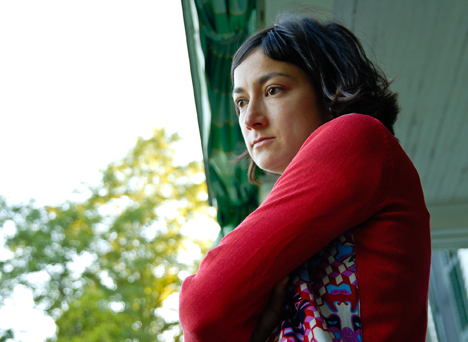
Could you introduce yourself including your background?
I was born in Luxembourg in 1973. A graduate of the Ecole Nationale Supérieure des Beaux-Arts in Paris, I live and work in Paris and Luxembourg.
Representing Luxembourg at the 2003 Venice Biennale, the pavilion won the Golden Lion for the Best National Participation. Since then my life got quite busy with many museum and gallery exhibitions around the world, among them the Tim Van Laere Gallery in Antwerp, Peter Blum Gallery and PS1 in New York, the Casino Contemporary Art Forum in Luxembourg, The Renaissance Society in Chicago, the Asian Art Museum in Seattle, the Museum of Contemporary Art in Taiwan and AD Gallery in Athens…
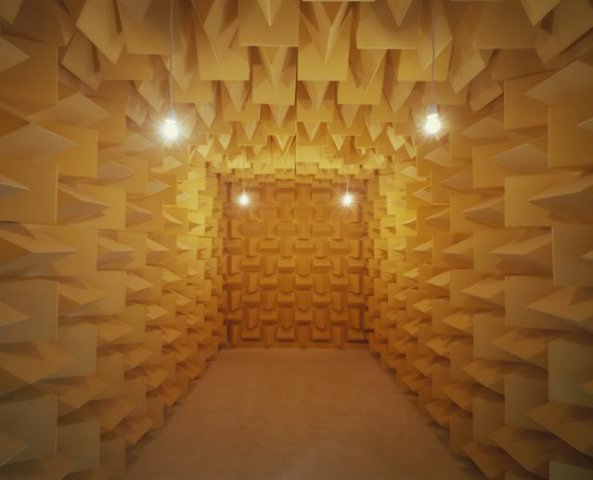
Chambre sourde (Anechoic Room), 2003 / Installation, Courtesy Peter Blum Chelsea, New York / photo credit: Cameraphoto Arte © Su-Mei Tse
Could you tell us why and how you start to pursue your career as being an artist?
In the beginning of my studies I was always somehow between music and art, but my attraction for the visual world made me decide to concentrate on my fine arts studies and playing the cello beside. A few years ago I started to use my musical interests and experiences as a language in my work. That’s how I got to feel the most satisfied in the way of expressing myself.
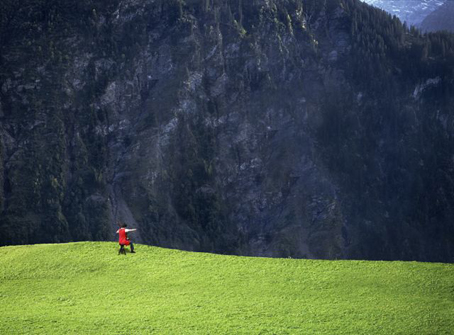
L’écho, videostill, 2003, Courtesy Peter Blum Chelsea, New York © Su-Mei Tse
Could you talk about your art work which won the Golden Lion Award at the 2003 Venice Biennale?
The Luxembourg Pavilion, the first floor of Ca’del Ducca, a very nice palazzo on the Canale Grande was composed by installations, sculptures, sounds and videos.
Here an extract of an article from Los Angeles Times, July 2003
“Art, pure and simple” by Christopher Miles:
“… The Luxembourg pavilion shows a sense of economy that allows viewers to lose themselves in a distilled poetic moment. Tse’s pavilion is a five-room meditation on time, space, image and sound-and the potential of their combinations to transcend conventional interpretations. ‘I wanted first to make people aware of silence and of their own sounds and rhythms,’ says the artist, who lined the entry room with foam rubber, converting the space into an acoustically dead cave that strips away sound like a palate cleanser. Two other rooms have a similar effect on a visitor’s sense of time. The first offers a simple seating area, a ball of yarn and a textual fragment alluding to Penelope’s long wait for Ulysses. The second displays hourglasses that measure odd durations, eliminating any sense of standard pace or measure. Time blurs.
But these stark room are also preparation for the lush offerings in the two remaining rooms Each contains a projected video. The first, “L’écho”, presents a cellist (Tse herself) playing against her own echo in an alpine meadow tucked between mountains. The second “Les Balayeurs du desert” (The Desert Sweepers) shows uniformed men fanned out across a vast desert, alternating between sweeping and taking breathers. The soundtrack was assembled from recordings of Parisian municipal street sweepers, whose rhythmic, repetitive activity inspired the piece, and whom the artist recalls as having provided a background track for her daily life when she lived in Paris.
Presented in adjacent rooms, the two video pieces, with their respectively lyrical and rhythmic audio backgrounds, provide symbiotic accompaniments for each other.
While showing an obvious flair for the romantic and poetic, Tse also employs humor and play. She signals that the work need not to be taken too seriously with such touches as the obvious artifice of her sweepers’ digital insertion into the desert and the Technicolor green of her alpine grass.”
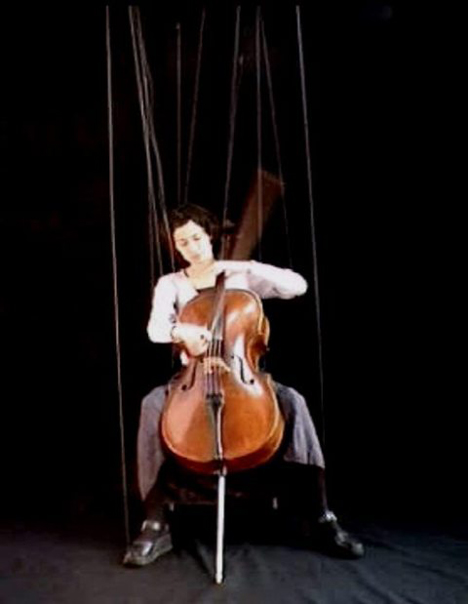
La marionnette, 1999, video sculpture, Courtesy the artist & Beaumontpublic, Luxembourg
Could you explain some of your art works?
– Chambre sourde
Straightaway, Chambre sourde (2003) invites the viewer to a change of sound and physical environment. Like a suspension point, this space offers the visitor, cut off from the outside world, a moment of silence and inward looking. Before talking about sound or music, Su-Mei Tse proposes a moment of silence.
– Das wohltemperierte Klavier
Tse habitually takes musical elements long since internalized and transforms them into visual expressions. The video installation piece “Das wohltemperierte Klavier,” shows close ups of bandaged fingers playing the piano, symbolizing the long process of the achivement in music or art in general. The extreme visual images of these bound hands, precisely conveys the way in which Tse oscillates between “the perfect classical ideal” and “faith in self pursuit.” When compared to the complexity, strictness and refinement of Bach’s music, these hands are an excellent metaphor depicting the inner psychological landscape of an artist’s circuitous journey.
– L’écho
The presence of sound and music in much of Su-Mei Tse’s creative work can be related to her musical education. L’écho has been presented with some other works at the 2003 Venice International Art Biennial at the Luxembourg pavilion. On this occasion the artist was awarded the Golden Lion for the best national participation. Su-Mei Tse’s L’écho (2003) positions musical conventions against the sonic features of the landscape. A video projection shows the artist playing a cello, poised on the edge of a canyon, to an expanse of encircling Alpine mountains. Blurring the distinctions between echoes, yodelling traditions, and call-and-response song patterns, the simple melodic phrase and its gentle answering resonates as a contemplation on culture’s relationship to its terrain. With her back facing the viewer, and her figure overwhelmed by the idyllic mountainscape, Tse enacts a contemporary version of sublime. Yet the rhythmic sounds of the cello and its soothing replies by the scenery posit a more sympathetic relationship between human and natural domains. This is especially apparent at points in the soundtrack where the echo answers differently, performing beyond its presumed subservient role to enact its own sense of identity and agency. » (Jim Drobnick, Aural Cultures 2004).
– La marionnette
The student of any art form must conform to the rigidly established demands it makes on the body if a certain degree of perfection is to be achieved. In the video La Marionnette (The Marionette) Su-Mei Tse is seen playing the cello, but attached to strings that hamper her movements. In the editing of this work she retained only the mistakes, her puppet-like movements creating a new, disjointed, almost burlesque rhythm. Here the artist humorously puts the question: is rigorous submission to a learning process the necessary evil underlying what is so rightly called “great art”?
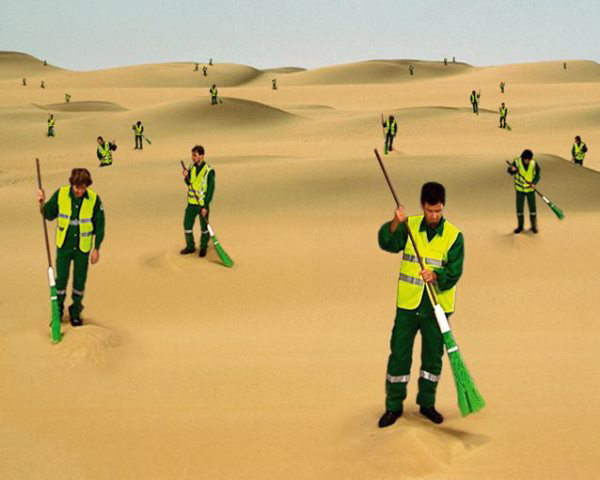
Les Balayeurs du desert (The Desert Sweepers), 2003, Courtesy Peter Blum Chelsea, New York / videostill © Su-Mei Tse
– Les Balayeurs du Désert
In the video Balayeurs du Désert (2003) [Desert Sweepers], she uses Paris corporation road sweepers. Recognizable in their uniforms, they immediately make you think of a trade, an anonymous group, a function. The infinite repetitiveness of their task, underscored by the sound of their sweeping, seems utterly absurd in this desert setting.
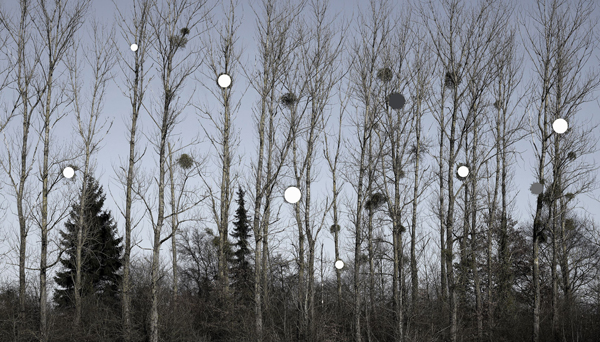
Mistelpartitition (Mistle Score), 2006, Courtesy Peter Blum Chelsea, New York & Tim Van Laere Gallery, Antwerp © Su-Mei Tse
– Mistelpartition
Mistelpartition (Mistle Score) shows a slow travelling shot through a landscape of a row of trees which appears like a musical score. The melancholic silence is broken by a mysterious music (an extract of D. Schostakovitch’s Cello Concerto n°1). The notes are visualized through illuminations in the misteltoe of the winter branches – a distant reflection of a lost tune.
– Pieds bandés
With the photograph Pieds bandés the artist recalls to foot founding still practiced not so long ago in China and conveys the oppression of freedom.
– Proposition de détour
Representing a fabulous bestiary and the paradisiacal flora typical of oriental iconography, a carpet on the floor takes the form of a maze as found in the conceptions of the Christian Middle Ages. Proposition de détour is a veritable proposal for a roundabout route, it invites visitors to let themselves become mentally and/or physically dis-Orient-ed.
– SUMY
In SUMY, a work created with Jean-Lou Majerus, the title on the shell earpieces is a typographically ironic allusion to both the famous Sony brand and the artist’s first name. Su-Mei Tse imbues near-surrealist objects with childhood memories and revives sounds all of us remember. The notion of memory is reinforced by the object’s inaccessibility in the vitrine.
– The Yellow Mountain
Projected onto a screen hung vertically like a scroll, reminding Chinese landscape painting, The Yellow Mountain borrows – and subverts – traditional Chinese imagery and music. The winsome initial cliché of the sun rising from behind a mountain is very quickly called into question by its unexpected change of direction. Using a straightforward process of reversal, the author summons us to think again about our stereotypes regarding the Orient and the relevance of our way of looking at the world in general.
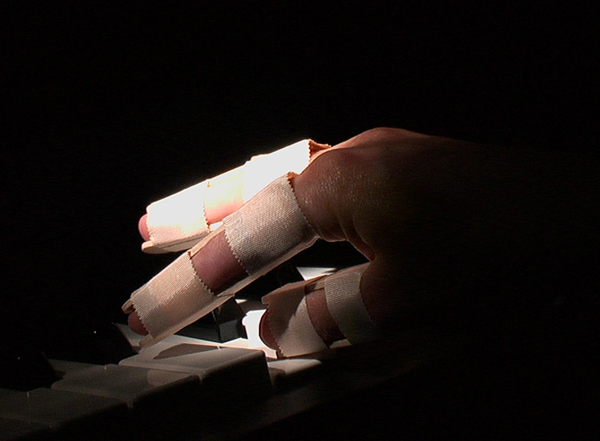
2001 – Das wohltemperierte Klavier, videostill 2 © Su-Mei Tse
Your parents are musicians. You also play the cello. It must be a natural evolution of bringing music into your art works. How does music play a roll in your works?
I think the most important for an artist is to use a personal language, to express ideas in the most honest way. For me, music and sound are the “tools” to use to create images and express in the most natural way the messages I want to share.
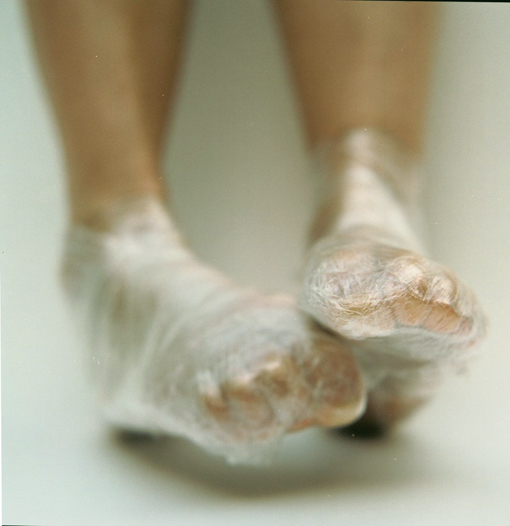
Pieds bandés (Bound Feet), 2000, Photography, Courtesy Beaumontpublic, Luxembourg & Peter Blum Chelsea, New York © Su-Mei Tse
Your father is an Chinese and mother is an English. And you were born in Luxembourg and have been based in Luxembourg and France. How does such intricately- intertwining cultural and national identities affect to your creation? And how do you feel about your cultural and national diverseness?
As I said above, it is important for an artist to use a personal and natural language. In the way I use personal experiences from music and my education, of course my multicultural backgrounds are part of it and even used as themes in my work.
“While the zen spirit emanating from it is obvious enough, this does not make her a ‘typically Asian’ artist. Through her Eurasian background, she has in her two cultures that she is constantly diverting or deflecting in order to shake off the clichés that usually go with them. But her work is also pervaded with humour, freshness and poetry.”
I like to give the viewer different view points, I think it is not interesting when things have only one way of understanding. This in-between and oppositions allow the works different levels of reading and so to exist in time.
“For the artist, different perceptions can exist side by side within a single work and viewers can take them in according to their culture, sensibilities and personal references. “
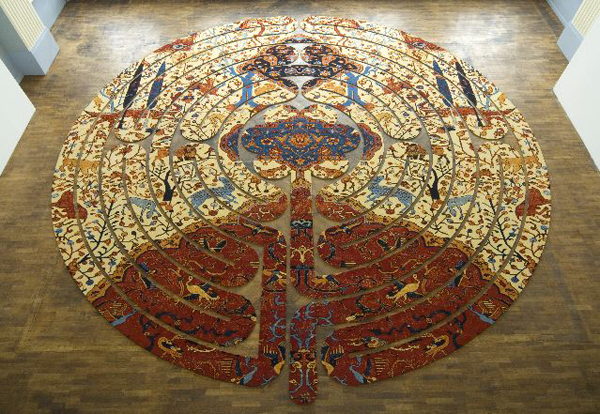
Proposition de detour, 2006 / Sculpture, exhibition view Casino, Forum d’Art Contemporain, Luxembourg, Private Collection, Taiwan / photo credit: Roman Mensing, artdoc.de © Su-Mei Tse
You have participated in the 2006 Echigo-Tsumari Art Triennial in Japan, where you did a group exhibition with other 2 artists. What did you show for the exhibition?
Actually Lee Mingwei, a taiwanese artist based in New York was invited for the 2006 Echigo-Tsumari Art Triennial. His project consisted in finding an empty old house in a village and have it restored for an residency project and invite other artists to stay and work for a certain period in that region. I was invited as a second artist after his stay and I invited Anna Adahl, a Swedish artist based in Stockholm to come after me.
Here a text by Lee Yulin about the works I did during my stay:
… …
“… …” is a work, consisting of two sets of 3 little light bulbs. These light bulbs function like suspension punctuation dots. Installed at the entrance of the house, the first set refers to the beginning of a story, and the second set in the living room suggests an open ending.
The Potato Project
For a long time, Su-Mei Tse has been interested in the idea of uniqueness that exists in Nature, including those seemingly characterless or indistinguishable elements, such as sand grains or snowflakes. Using something so banal like potatoes, the artist’s intention is to point out the unique quality inherent in all natural things, in particular, in human beings.
During her residency in Lee Mingwei “Artist-as-Residence” project in a region famous for its historical ceramic tradition, Su-Mei Tse decided to work with a local ceramicist. These hand-made ceramic potatoes give form to her initial concern about individuality and the uniqueness of every human being.
Earthquake Paintings
During her stay in the Kamishinden Community Centre, Su-Mei Tse began a series of witty but barely visible interventions in the house – giving titles to the “wall paintings” portrayed by the last earthquake in the region or adding colours and lines onto the destroyed surfaces of the walls of the house. She poetically released imaginary figures out of the region’s tragic incident. More Su-Mei Tse’s interventions can be found in the house by those who transcend the apparent reality.
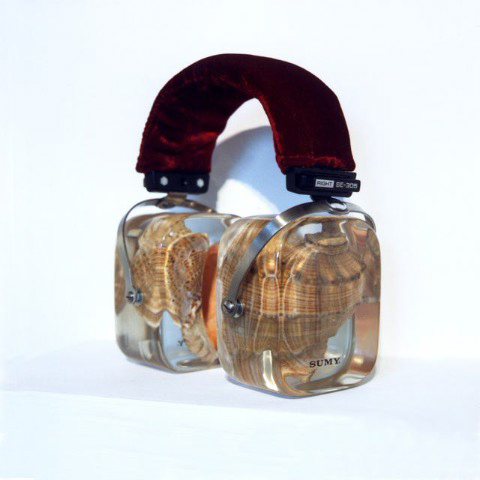
SUMY, 2001 / Su-Mei Tse & Jean-LouMajerus / Courtesy the artists & Peter Blum Chelsea, New York / photo credit: Jean-Lou Majerus © Su-Mei Tse
Could you please tell us any inspirations and influences?
In general, Japan is very inspiring for me. In the one hand, I feel very amazed and attracted by its so different culture and way of expression, and at the same time I feel a personal link and familiarity with the culture and its esthetics. I started my interest and knowledge about it with the reading of Yasunari Kawabata’s literature, and was in particular inspired by the notion of time and length you can feel in some of his novels. That’s for example how I came to make the photograph installation called “The Master of Go” after Kawabatas novel with the same title.
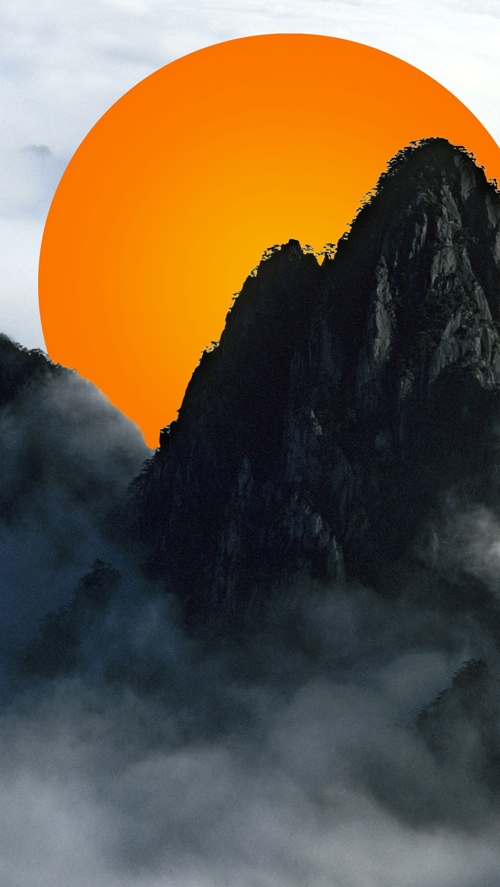
2004 – The Yellow Mountain, videostill / Courtesy Peter Blum Chelsea, New York & Tim Van Laere Gallery, Antwerp © Su-Mei Tse
Your solo exhibition at Art Tower Mito in Japan starts on February 7th next year. What is your plan for the solo show?
I’m just back from a visit at Art Tower Mito with my partner Jean-Lou Majerus. For the elaboration of exhibitions and realization of my art works, we work together in a very close way. We also did some collaboration works that we signed together. In Mito, we met with Mr Toshihiro Asai, the senior curator who invited me for that show and we exchanged ideas for the selection of works and way to show them to create an interesting composition. The space of the museum is very interesting and gives a very nice rhythm and journey through the works. Important is to feel the space and work with it and its air.
With this composition of existing works, I will work out some new pieces for the show.
Please tell us your current and future activities.
There are 2 current exhibitions in France, one at Centre d’Art Contemporain d’Alsace together with the French artist Virginie Yassef and one group show called “L’Art en Europe – Expérience Pommery n°5”. And also a solo exhibition “East Wind” at the Asian Art Museum in Seattle, US.
Next month, I will participate at the Singapore Biennale directed by Fumio Nanjo. For next year I prepare a project for the Isabella Stewart Gardener Museum, where I spent a residency last year…
Su-Mei Tse at Art Tower, Mito
Date: February 7th – May 10th, 2009
Place: Art Tower, Mito
Address: 1-6-8 Gokencho, Mito, Ibaraki, Japan
https://www.arttowermito.or.jp
Text: Mariko Takei





